Are you looking to share your knowledge and skills with the world? Well, learning the art of writing how-to articles is just what you need! The internet is teeming with readers seeking information on numerous topics. As an expert in your field, mastering these types of articles can help establish your authority and give you a platform for sharing invaluable insights. In this comprehensive guide, I will walk you through the steps and tips for creating instructive and engaging how-to articles that stand out. So buckle up as we embark on this journey to make you an exemplary how-to article writer!
What is a How-To Article?
A how-to article is online content specifically aimed at teaching readers step-by-step processes or procedures necessary to complete certain tasks or goals. These articles rely on clear instructions, logical sequence, and language that’s easy to understand – ensuring that readers can efficiently replicate the process while minimizing confusion.
According to Orbit Media, 2022, the most popular blog content format is how-to articles (76%), followed by list-style posts (55%).
How-to articles cater to subjects ranging from simple daily activities like cooking recipes or organizing spaces effectively to more complex topics like coding tutorials or troubleshooting specialized equipment. Such content guides individuals in solving problems, acquiring new skills, or enhancing existing competencies by breaking down potentially challenging experiments into manageable parts.
One key feature of how-to articles is their focus on practicality over theory – prioritizing actionable advice over abstract concepts. This approach increases the likelihood of readers successfully applying your guidance in real-world situations, boosting their confidence in your instruction and newfound abilities.
Benefits of Writing How-To Articles


Establish Yourself as an Authority
Writing how-to articles lets you showcase your knowledge and expertise in a niche or industry. By providing valuable and well-researched information, readers will begin to view you as a credible source they can trust. This recognition can lead to networking opportunities, guest posting invitations, or consultation requests.
Enhance Your Content Portfolio
Having a diverse and comprehensive content portfolio helps attract various types of readers. You demonstrate versatility in writing skills by writing how-to articles and other forms of content, such as blog posts, case studies, and whitepapers. Potential clients and readers alike appreciate the variety in content offerings.
Drive Traffic to Your Website or Blog
Many people rely on search engines when seeking answers to their questions. Well-optimized how-to content is more likely to rank higher in search engine results pages (SERPs), driving organic traffic to your website or blog.
- How To and Comparison articles attract the most backlinks (Semrush, 2023)



- Headings with “Guide” in the title attract thee times more organic traffic than others, and those containing “How to” outperform by 1.5 times (Semrush, 2022)



Increase On-Site Engagement Metrics
How-to articles are longer than the average blog post because they provide detailed instructions and explanations for complex topics. This increased length often leads to improved on-site engagement metrics such as time spent on a page, scroll depth, and social shares. These metrics are essential for demonstrating the success of your content marketing strategy.
Educate and Empower Readers
One of the primary purposes of a how-to article is to teach readers something they did not know before reading it. The more valuable insights your article provides, the more empowered readers feel after consuming its contents—resulting in positive responses such as commenting, sharing with friends or colleagues, or bookmarking it as a helpful resource.
Generate Revenue Opportunities
If you have developed products related to the subject matter you’re covering in your how-to articles—for instance, ebooks or online courses—you can monetize these pieces by including links that entice readers to purchase your offerings. This method establishes you as an expert and can create additional revenue streams.
How to Write a Good How-To Article: Step by Step
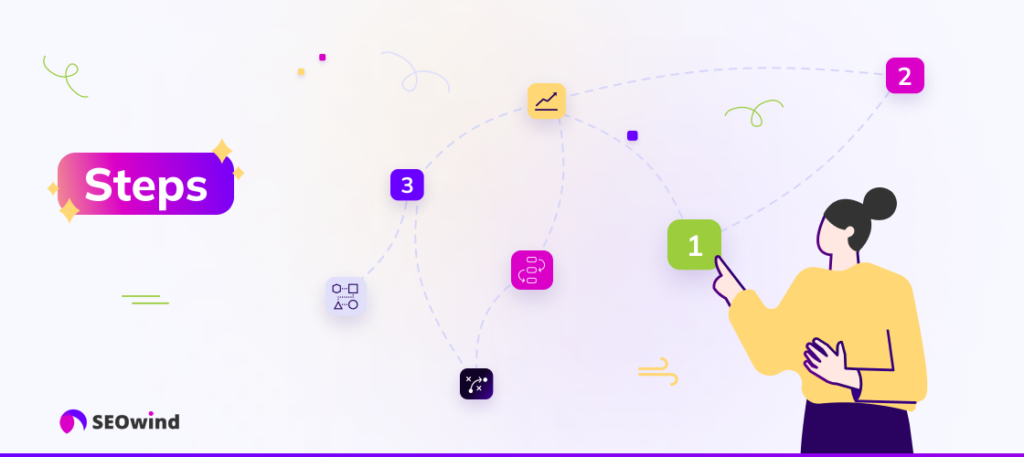

1. Keyword Research
Begin the process of writing a how-to article with thorough keyword research. This crucial first step ensures your content is aligned with what your target audience searches for online. Use tools like Google’s Keyword Planner, SEMRush, or Ahrefs to discover relevant keywords and phrases with high search volume and moderate competition. Remember to naturally include 3-5 primary and secondary keywords within your article without overstuffing them.
2. Resource Research
Next, conduct resource research to gather valuable and relevant information for your how-to content. Investigate competitors’ related articles, identify gaps in their content, and look for ways to enhance your how-to content piece with unique insights. Furthermore, examine credible sources like academic journals or industry publications to support your claims with sound evidence.
3. Set up Your Formatting
An organized structure is key when presenting how-to articles, as it seamlessly directs readers through all the important steps while maintaining clarity and coherence. Break each instruction into numbered steps or bullet points, ensuring they’re concise yet comprehensive enough for complete beginners to follow easily.
4. Complete Each Step in Your Audience’s Eyes
As you write and describe each step, consider the perspective of someone new to the topic—think about the obvious questions they might ask or areas where confusion could arise. To produce an exciting and instructive how-to article:
- Use clear language
- Offer informative examples
- Address potential challenges
- Explain why specific actions are needed in certain steps. Consider chronological order.
This lens allows you to create accessible content that caters effectively to various learning needs.
5. Add Images or Videos If Appropriate and Possible
Visual elements can enhance your how-to article by offering precise explanations and demonstrations. Including images, diagrams, infographics, or even videos will make complex concepts more digestible for readers – especially those who favor visual learning. Just be sure to use high-quality graphics that serve a clear purpose in your content.
6. Answer Supplementary Questions
Beyond the main instructions, readers may have additional queries or concerns about the topic. Anticipate these supplementary questions and incorporate answers within your how-to article, either as part of describing the steps or in separate sections such as FAQs. By covering all bases, you instill confidence in readers and position yourself as a reliable source of information.
7. Provide Additional Help
To ensure your audience gets optimal value from your how-to article, include any extra resources that could provide further assistance or related knowledge:
- Links to external websites with helpful tutorials
- Recommendations for relevant tools or software
- Bonus tips not directly tied to the main process
By doing so, you go above and beyond in supporting your readers’ needs while safeguarding their trust.
8. Add CTAs
Finally, include compelling Call-To-Actions (CTAs) in your how-to article. Encourage readers to comment on their success with following the steps, ask questions if they encounter difficulties, or share the article with friends who might benefit from it too. This will maximize reader engagement and foster a sense of community among your audience members as they participate in discussions surrounding the topic.
Tips to Make It the Best “How To” Article on the Internet


To stand out amidst a sea of how-to articles and make your content captivating, it is essential to focus on improving various aspects of your writing. Considering specificity in tutorials, enhancing introductions and conclusions, crafting attractive titles, and adding relevant links can significantly contribute to creating a top-notch how-to article.
Be Specific
When writing an article, specificity is key. Avoid being vague or using jargon that could leave readers more confused than they were before reading the piece. Ensure that:
- Steps are precisely explained to guide readers comprehensively on each stage.
- Definitions are clear-cut, making them easy for users to comprehend.
- Examples are relevant and thoroughly demonstrate the concept at hand.
Ultimately, an informative and specific article will provide value to its readers.
Have a Great Introduction and Conclusion
Your introduction should be engaging, capturing readers’ attention from the first paragraph. To achieve this:
- Start with an interesting fact or statistic related to the topic.
- Convey what readers can expect from your article.
- Offer assurance that their problem will be resolved by following your guidelines.
The conclusion must also carry its weight by efficiently summarizing the main points raised throughout your text while reiterating any crucial information.
- Restate the primary objective of your how-to article.
- Remind readers of the benefits gained through the proper implementation of steps outlined in the piece.
The introduction, outline, and conclusion play critical roles in framing overall impressions of your material; hence should be addressed.
Improve Your Title
A well-crafted title has significant potential to draw traffic toward your work! The title should promise something valuable for those who decide to dive into it—eliciting curiosity or speaking explicitly about problems addressed within the content itself. Consider these tips when formulating intriguing titles:
- Keep it concise (aim for fewer than 60 characters).
- Be clear with the purpose of your article.
- Use powerful words that trigger emotions or interest within readers.
- Ensure the title aligns accurately with how-to article content to avoid misleading users.
Add Links (Internal and External)
The strategic implementation of links can enhance user experience, making readers perceive your content as informative and trustworthy.
- Internal links: Guide readers towards other articles within your site to encourage more profound engagement and knowledge on topics related directly or indirectly to that at hand. These also help consolidate website structure—making it easier for search engines to crawl pages, leading to potential SEO benefits.
- External links: Sharing reliable external sources is essential in building credibility. Treat it as an opportunity to showcase research conducted before writing the piece by directing visitors toward established experts’ publications/sources mentioned throughout the text. This enables further exploration based on their interests while supporting claims made within the work.
By applying these tips when writing articles, you’re well on your way to creating unique content, attracting reader engagement, and achieving success in this highly competitive online sphere.
Examples of High-Quality How-To Articles


There are countless examples of well-written how-to articles on the internet. Still, some offer comprehensive information, engaging writing style, and highly valuable content. Let’s examine four pieces that reflect excellence in different fields, illustrating the diversity of topics one can write about.
1. HubSpot’s “How to Write a Blog Post: A Step-by-Step Guide”
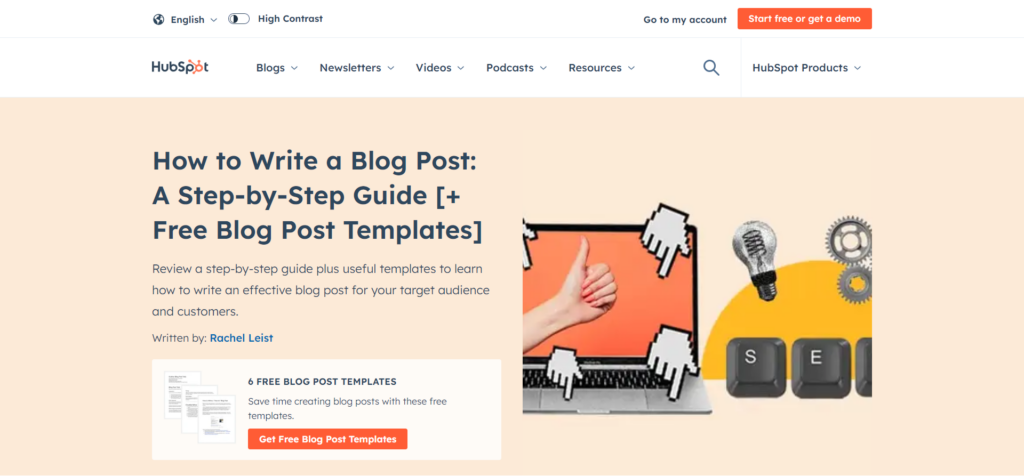

In an exemplary how-to article about blogging, HubSpot provides actionable step-by-step instructions, making it easy for readers to understand and follow. The article contains helpful screenshots, incorporates relevant keywords like “writing a blog post,” and includes headers and bullet points to make the content more accessible.
2. Everything you need to know about SEO Content Brief – Ultimate Guide
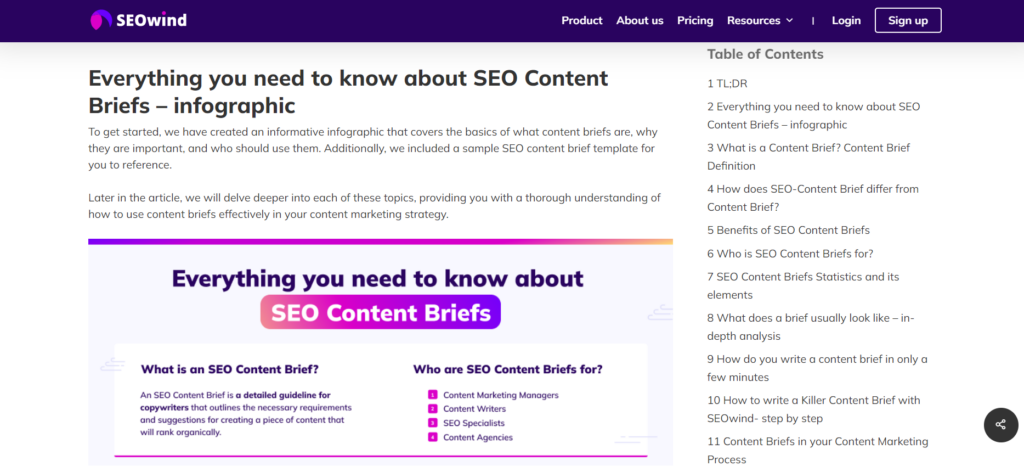

Copywriters benefit from how-to guides tailored toward beginners seeking a solid foundation for writing content. Everything you need to know about SEO Content Brief – Ultimate Guide incorporates all the essentials covering creating content briefs: definition, benefits, statistics, steps, and tips on how to include it in the content marketing process. Helpful visuals accompany each concept, ensuring clear instructions and greater understanding.
The authors identified their target audience’s pain points in all these examples. They utilized tools like detailed instructions, eye-catching visuals, or expert insights to guide them through the process. If you aspire to create fantastic how-to articles that resonate with readers, take inspiration from these exceptional pieces and strive to incorporate their most successful features into your work.
Tools for Writing How-To Articles
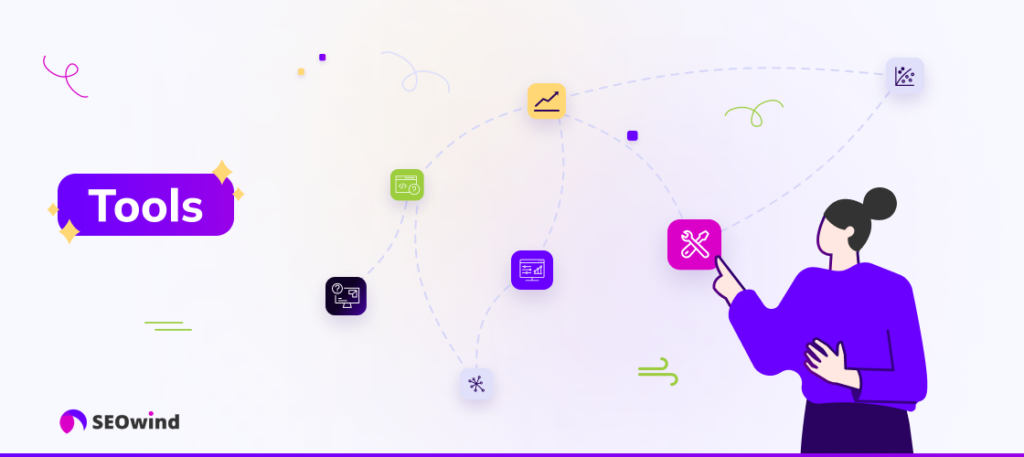

To create engaging and informative how-to articles, utilizing the right tools to improve your article writing process and overall productivity is essential. This section discusses various tools to facilitate seamless drafting, researching, editing, and formatting of your content.
Content and Keyword Research Tools
- Google: The most widely-used search engine provides an inexhaustible source of information, serving as a perfect starting point when researching any topic.
- SEOwind.io: SEO Intelligence Tool that analyzes top-ranking content for a particular keyword. You can gain insights into their keywords, titles and meta descriptions, and outlines.
AI Article Writing Tool
- SEOwind.io: AI Writing Assistant that helps with writing long-form articles. They are based on in-depth content research which makes them comprehensive and SEO-optimized.
Grammar and Editing Tools
- Grammarly: An AI-powered writing assistant that helps correct grammar issues and improve overall sentence structure.
- Hemingway Editor: An online tool aimed to simplify text by identifying hard-to-read sentences, passive voice usage, and other common writing problems.
- ProWritingAid: Providing real-time feedback on grammar, style, tone, and more – perfect for fine-tuning how-to articles.
Image Creation Tools
- Canva: Offers a wide range of templates and graphic elements to create visually-appealing images or infographics to enhance your how-to article.
- Gimp: A free alternative to Adobe Photoshop, allowing you to edit images and add visual aids seamlessly.
- Unsplash & Pexels: Source high-quality stock photos when needed at no cost.
SEO Optimization Tools
- SEMRush or Ahrefs: Comprehensive SEO suites that perform in-depth keyword research effectively while helping identify opportunities for enhancing your content’s search engine visibility.
- Yoast SEO Plugin: Widely used with WordPress sites; optimizes content readability while offering suggestions for various aspects like meta descriptions or focus keywords.
Leverage these tools throughout the writing process to create compelling and concise how-to articles that resonate with your audience and continually provide value.
Promoting Your How-To Articles


Promoting your how-to articles is essential to attract more readers and increase your authority as a knowledgeable content writer. Here are some effective strategies to help you spread the word about your informative articles.
Share on Social Media Platforms
Sharing your how-to articles on social media platforms (such as Facebook, Twitter, LinkedIn, Instagram, and Pinterest) can significantly extend their reach. Craft engaging captions and use relevant hashtags or join niche-specific groups where members may be interested in learning how to perform certain tasks.
Engage in Online Communities
Join forums and online communities related to your topic or industry and share your how-to articles there. Make sure to follow each community’s rules regarding self-promotion and contribute valuable insights in discussions before sharing links to your work.
- Quora
- Industry/niche-specific discussion boards or Facebook groups
Reach Out to Influencers or Bloggers in Your Niche
Collaborate with influencers or fellow bloggers within your sector by offering guest posting opportunities, interviews, co-authorships, or simply requesting them to share the link for your how-to article if it aligns with their content.
Leverage Email Marketing Campaigns
Send out an email newsletter featuring links to your recent how-to articles. This enables direct communication with interested subscribers and offers them fresh content they likely find helpful.
- Create a high-quality mailing list of targeted recipients.
- Use catchy subject lines.
- Add a brief but captivating introduction for each article featured.
Repurpose Your Content into Different Formats
Transforming your written how-to article into other types of content marketing allows reaching more people who prefer different means of consuming information.
- Podcasts: Turn the text into episodes for audio consumption.
- Videos: Record yourself demonstrating steps from the article.
- Infographics: Visualize the data/points/steps discussed in the piece.
- Ebooks: Compile a series of related how-to articles into one comprehensive guide.
Optimize Your Content for Search Engines (SEO)
Search Engine Optimization is essential in promoting your how-to articles and ensuring they rank higher on search engine results pages. Ensure you incorporate relevant keywords, write informative meta descriptions, optimize images/videos, and include internal/external links to improve your SEO efforts.
Remember that promoting your how-to articles requires persistence and patience. You may not see immediate results, but these promotion strategies will help you attract more readers interested in learning from your expertise over time.
Measuring the Success of Your How-To Articles


As a content writer, your ultimate goal is to create excellent how-to articles that inform, engage, and guide your audience. However, measuring the impact and success of your published pieces is also essential. Using appropriate key performance indicators (KPIs) will help determine whether your how-to articles meet their objectives and identify areas for improvement.
Here are four essential KPIs to evaluate the effectiveness of your how-to articles:
- Website Traffic: One fundamental metric to track is the number of new and returning visitors to your website or blog and their page views over time. Analyzing traffic sources can also assist in understanding how readers discover your content, whether through organic search results, social media shares, or other channels.
- Audience Engagement: Look into metrics like average time on the page and scroll depth for hints about readers’ behavior when consuming your how-to article. High-quality writing should result in longer reading times and more interaction with the material presented.
- Social Shares: The number of shares on social media platforms can indicate the value and relevance of your content. When people find a great how-to article, they often share it with their networks—be sure you provide easy sharing options within every article.
- Conversion Rates: Are readers following calls-to-action (CTA) included in your article? Whether signing up for an email list or purchasing a product mentioned throughout the piece, implementing UTM tracking codes will give insights into conversion rates directly attributable to each how-to article.
Furthermore, set specific goals for each KPI before publishing new articles so you can later compare actual results against benchmark targets.
It’s also worth noting that patience is crucial when measuring success. Good content may gain traction after some time. Still, it could steadily increase engagement as the audience grows organically due to word-of-mouth recommendations or consistent SEO efforts.
Lastly, continuously evaluate these metrics and adjust your approach based on data-driven insights. By doing so, you’ll be well on your way to mastering the art of writing compelling and engaging how-to articles.
Best Practices for Writing How-To Articles
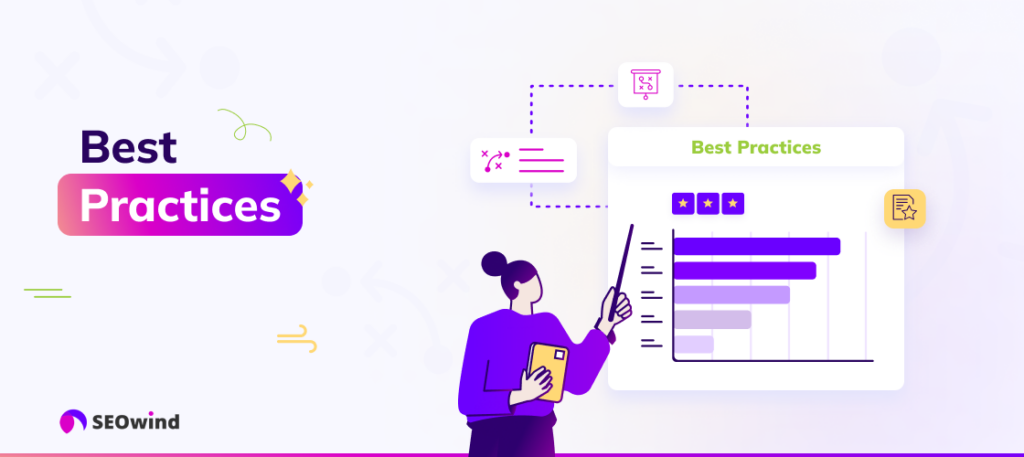

High-quality how-to articles require strategic planning, attention to detail, and a compelling writing style. By following a set of best practices, you will ensure your content stands apart from the competition and offers genuine value to its readers. In this section, we’ll explore proven tactics that enhance your how-to article and optimize it for search engines and readers alike.
Simplify Technical Jargon
Helpful how-to articles need to be accessible to readers at various knowledge levels. Break down complex terminology into simpler language or provide a glossary of terms within the article. Adopting this practice ensures beginners grasp the subject while offering valuable information to experienced audiences.
Be Concise and Clear
Clarity is crucial when providing instructions. Keep sentences short, precise, and easy to read—utilize active voice wherever possible. Prioritize essential information while eliminating redundant phrases or irrelevant details, as clarity helps maintain reader focus throughout your entire article.
Use Subheadings and Bullet Points
Break up blocks of text by using subheadings that make it easier to navigate sections within a how-to article. Likewise, bullet points condense vital steps or tips without overwhelming readers with massive paragraphs.
Here are some additional benefits of proper formatting:
- Simplifies skimming: Readers can quickly locate specific information.
- Enhances readability: Uncluttered layout caters to online reading behavior.
- Highlights important points: Increased visibility makes steps memorable.
Verify Facts and Sources
Highly informative, how-to articles should be firmly rooted in accurate data collected from reputable, reliable sources, and authenticated through fact-checking systems. This attention to accuracy demonstrates expertise in your industry discipline while strengthening credibility with your audience.
A few reminders when choosing sources:
- Evaluate their reputation: Seek out well-established publications or industry authorities.
- Examine recency: Ensure information aligns with current best practices or industry standards.
- Cross-check data: Corroborate information across multiple sources to avoid perpetuating falsehoods.
Revise and Edit Thoroughly
Before publishing a how-to article, allow time for thorough revisions—editing structure and grammar. You will convey professionalism and expertise by tightening sentences, refining explanations, and perfecting punctuation.
Editing tips worth considering:
- Read the content aloud: Identify awkward phrasings or areas lacking clarity.
- Conduct peer review: Request feedback from colleagues for a fresh perspective.
- Utilize editing tools: Use grammar software like Grammarly or Hemingway Editor to catch any mistakes.
Incorporating these best practices when writing how-to articles ensures that your content serves its purpose while engaging readers. Moreover, it enhances your authority as an expert skilled at precisely conveying knowledge—a true asset in today’s content-saturated world.
Conclusion: How to End Your How-to Article
As we reach the end of this comprehensive guide, it’s crucial to recap the vital aspects of writing a great how-to article. Mastering the art of creating how-to articles requires understanding their nature and benefits and following a step-by-step approach for drafting one. Implementing valuable tips such as specificity, crafting captivating introductions and conclusions, refining your title, and adding relevant links will significantly enhance your work.
Furthermore, learning from examples of high-quality how-to articles while utilizing suitable tools for writing can help streamline the entire article writing process. After completing your well-rounded article, remember that proactive promotion is essential for gaining visibility. Lastly, monitoring the performance of your how-to articles through relevant metrics allows you to evaluate success and implement improvements.
In closing:
- Remember the importance of keyword research in crafting engaging and SEO-friendly content.
- Always maintain a clear structure with logical formatting, guiding users throughout each step.
- Incorporate visual aids such as images or videos when possible to improve audience understanding.
- Aim for specificity by addressing supplementary questions and providing additional assistance where necessary.
- Enhance the user experience by concluding on a helpful note and offering compelling CTAs (call-to-actions).
By diligently implementing these best practices in your writing approach, you’ll be equipped to create authoritative and informative how-to articles that cater to readers’ needs effortlessly. As your proficiency progresses, you’ll unlock opportunities within the realm of content writing—further exemplifying that mastery in composing excellent how-to articles is an invaluable skill worth pursuing.


